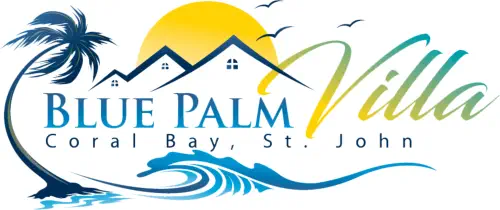CALL JOHN -704-502-5360
Of the three U.S. Virgin Islands, St. Croix, St. John
and St.Thomas, St. John, is the smallest and most
pleasing or picturesque in natural simplicity. St.
John is best known for its dozens of post card
perfect white sand beaches, turquoise bays
abounding in colorful corals and rainbows of
tropical fish & endless vistas of green velvet hills.
St. John retains a tranquil, unspoiled beauty
uncommon in the Caribbean or anywhere else in
the world. Settled in the early 1700s by Danish
immigrants attracted to the island's potential as a
sugar cane-producing colony, St. John soon
blossomed into a thriving society. The ruins of
the Annaberg Sugar Plantation and other smaller
plantations on the island attest to the island's agricultural history.
Only nine miles long & three miles wide, the island offers untouched forests, featuring fascinating trails,
secluded coves, some of the worlds most beautiful beaches shaded by seagrape trees, and coconut
palms, ancient petroglyphs, wonderful ruins to explore, crystal blue-green waters teeming with coral
reef life and tropical forests providing habitat for over 800 species of plants. With two thirds of the
island belonging to the Virgin Islands National Park, it will remain that way for generations to come &
be accessible to all, making St. John the jewel of the US Virgin Islands.
The Reef Bay Trail takes hikers through dense forests, plantation ruins, and rock outcroppings marked
by well-preserved petroglyphs. Trunk Bay, Hawksnest Bay, Cinnamon Bay, and Maho Bay are just four
of the dozens of beaches. Cruz Bay, the center of activity on St. John, contains colorful shops, lively bars,
and fabulous restaurants.
Climate is temperate year-round ranging from low eighties during the winter months to the low mid
nineties in the summer.
The island offers plenty of shopping, all levels of food service and types of restaurants. Visitors should
also keep an eye out for iguanas, mongooses, deer, sheep, goats, donkeys and far too many species of
bird to mention. Snakes won't be seen though; there are none on St. John.
Getting to St. John:
Travel to St. John USVI is easy, but not so easy as to make it over crowded. Travelers fly into Cyril E King
Airport on St. Thomas. The St. Thomas airport is served by several major carriers including Delta,
American, U.S. Airways and United, making travel to the Virgin Islands easy. Vacationers to St. John then
take a taxi to one of the islands two ferry landings. For those who want a little longer boat ride, the
ferry from Crown Bay Marina, within sight of the many Caribbean cruise ships that dock at St. Thomas,
is about a 45 minute ride to the ferry dock at Cruz Bay on St. John. For those individuals preferring to
see a little more of St. Thomas and spend a little less time on the sea, the ferry landing at Red Hook is
about 15 minutes by water from Cruz Bay. Once arriving at the Cruz Bay ferry landing, visitors will find
taxis ready to take them wherever they are headed and car rentals are available just a short walk away.
For guest staying at Blue Palm Villa, you will be met by our liaison and escorted to the villa.
About St. John




CALL JOHN : 704-502-5360
CONTACT
e: bluepalmvilla@gmail.com
P: 704-502-5360
Of the three U.S. Virgin Islands, St. Croix, St. John and
St.Thomas, St. John, is the smallest and most pleasing or
picturesque in natural simplicity. St. John is best known for
its dozens of post card perfect white sand beaches,
turquoise bays abounding in colorful corals and rainbows
of tropical fish & endless vistas of green velvet hills. St. John
retains a tranquil, unspoiled beauty uncommon in the
Caribbean or anywhere else in the world. Settled in the
early 1700s by Danish immigrants attracted to the island's
potential as a sugar cane-producing colony, St. John soon
blossomed into a thriving society. The ruins of the
Annaberg Sugar Plantation and other smaller plantations
on the island attest to the island's agricultural history.
Only nine miles long & three miles wide, the island offers untouched forests, featuring fascinating trails, secluded coves, some of
the worlds most beautiful beaches shaded by seagrape trees, and coconut palms, ancient petroglyphs, wonderful ruins to
explore, crystal blue-green waters teeming with coral reef life and tropical forests providing habitat for over 800 species of plants.
With two thirds of the island belonging to the Virgin Islands National Park, it will remain that way for generations to come & be
accessible to all, making St. John the jewel of the US Virgin Islands.
The Reef Bay Trail takes hikers through dense forests, plantation ruins, and rock outcroppings marked by well-preserved
petroglyphs. Trunk Bay, Hawksnest Bay, Cinnamon Bay, and Maho Bay are just four of the dozens of beaches. Cruz Bay, the
center of activity on St. John, contains colorful shops, lively bars, and fabulous restaurants.
Climate is temperate year-round ranging from low eighties during the winter months to the low mid nineties in the summer.
The island offers plenty of shopping, all levels of food service and types of restaurants. Visitors should also keep an eye out for
iguanas, mongooses, deer, sheep, goats, donkeys and far too many species of bird to mention. Snakes won't be seen though;
there are none on St. John.
Getting to St. John:
Travel to St. John USVI is easy, but not so easy as to make it over crowded. Travelers fly into Cyril E King Airport on St. Thomas. The
St. Thomas airport is served by several major carriers including Delta, American, United, Spirit, Jet Blue and others making travel
to the Virgin Islands easy. Vacationers to St. John then take a taxi to one of the islands two ferry landings. For those who want a
little longer boat ride, the ferry from Crown Bay Marina., within sight of the many Caribbean cruise ships that dock at St. Thomas,
is about a 45 minute ride to the ferry dock at Cruz Bay on St. John. For those individuals preferring to see a little more of St.
Thomas and spend a little less time on the sea, the ferry landing at Red Hook is about 15 minutes by water from Cruz Bay. Once
arriving at the Cruz Bay ferry landing, visitors will find taxis ready to take them wherever they are headed and car rentals are
available just a short walk away. For guest staying at Blue Palm Villa, you will be met by our liaison and escorted to the villa.
About St. John



CALL JOHN: 704-502-5360



About St. John
Of the three U.S.
Virgin Islands, St.
Croix, St. John
and St.Thomas,
St. John, is the
smallest and most pleasing or
picturesque in natural simplicity. St.
John is best known for its dozens of
post card perfect white sand beaches,
turquoise bays abounding in colorful
corals and rainbows of tropical fish &
endless vistas of green velvet hills. St.
John retains a tranquil, unspoiled
beauty uncommon in the Caribbean or
anywhere else in the world. Settled in
the early 1700s by Danish immigrants
attracted to the island's potential as a
sugar cane-producing colony, St. John
soon blossomed into a thriving society.
The ruins of the Annaberg Sugar
Plantation and other smaller
plantations on the island attest to the
island's agricultural history.
Only nine miles long & three miles
wide, the island offers untouched
forests, featuring fascinating trails,
secluded coves, some of the worlds
most beautiful beaches shaded by
seagrape trees, and coconut palms,
ancient petroglyphs, wonderful ruins
to explore, crystal blue-green waters
teeming with coral reef life and tropical
forests providing habitat for over 800
species of plants. With two thirds of
the island belonging to the Virgin
Islands National Park, it will remain
that way for generations to come & be
accessible to all, making St. John the
jewel of the US Virgin Islands.
The Reef Bay Trail takes hikers through
dense forests, plantation ruins, and
rock outcroppings marked by well-
preserved petroglyphs. Trunk Bay,
Hawksnest Bay, Cinnamon Bay, and
Maho Bay are just four of the dozens
of beaches. Cruz Bay, the center of
activity on St. John, contains colorful
shops, lively bars, and fabulous
restaurants.
Climate is temperate year-round
ranging from low eighties during the
winter months to the low mid nineties
in the summer.
The island offers plenty of shopping,
all levels of food service and types of
restaurants. Visitors should also keep
an eye out for iguanas, mongooses,
deer, sheep, goats, donkeys and far
too many species of bird to mention.
Snakes won't be seen though; there
are none on St. John.


Getting to St. John:
Travel to St. John USVI is easy, but not
so easy as to make it over crowded.
Travelers fly into Cyril E King Airport
on St. Thomas. The St. Thomas airport
is served by several major carriers
including Delta, American, U.S.
Airways and United, making travel to
the Virgin Islands easy. Vacationers to
St. John then take a taxi to one of the
islands two ferry landings. For those
who want a little longer boat ride, the
ferry from Crown Bay Marina, within
sight of the many Caribbean cruise
ships that dock at St. Thomas, is about
a 45 minute ride to the ferry dock at
Cruz Bay on St. John. For those
individuals preferring to see a little
more of St. Thomas and spend a little
less time on the sea, the ferry landing
at Red Hook is about 15 minutes by
water from Cruz Bay. Once arriving at
the Cruz Bay ferry landing, visitors will
find taxis ready to take them wherever
they are headed and car rentals are
available just a short walk away. For
guest staying at Blue Palm Villa, you
will be met by our liaison and escorted
to the villa.


































